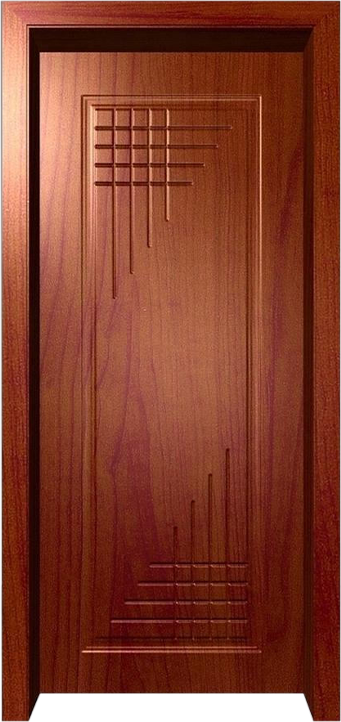2025-08-08

In the competitive building materials market, maintaining consistent product quality is essential for customer satisfaction and long-term business relationships. A PVC MDF door factory typically follows a structured and monitored process to control quality during mass production. This includes attention to raw materials, manufacturing procedures, inspections, and final packaging. Each step plays an important role in delivering doors that meet customer expectations and functional standards.
Quality control often begins with careful selection of raw materials. Medium-density fiberboard (MDF) must meet density and moisture content standards, while PVC film must have suitable thickness, durability, and adhesion properties. A PVC MDF door factory usually works with verified suppliers and may inspect incoming materials to confirm they match required specifications. This early-stage check helps reduce the risk of defects in later production stages.
Once materials are approved, the production process begins. MDF sheets are cut to size and shaped using CNC machines or other precision tools. During this stage, consistent machine calibration is critical to ensure that dimensions are uniform and that door designs are symmetrical and smooth. Factories monitor cutting and routing processes to avoid uneven edges, splintering, or dimensional errors. Any parts that do not meet the standard are typically removed before proceeding to the next stage.
The next step involves attaching the PVC film to the MDF base. This process is typically done using vacuum membrane presses or hot glue lamination machines, depending on the factory's equipment. The temperature, pressure, and time must be carefully controlled to ensure the PVC film bonds securely without bubbles, wrinkles, or peeling. A PVC MDF door factory often assigns trained technicians to monitor these machines and make necessary adjustments in real time. Regular equipment maintenance is also conducted to prevent mechanical errors that could impact film application.
In-process inspections are conducted throughout production. Factory staff or dedicated quality inspectors check the alignment, surface quality, and finishing of each batch. They look for signs of discoloration, uneven coating, or warping, which may result from equipment issues or material inconsistencies. When defects are found, corrective actions are taken, and affected products are separated from the shipment.
Color consistency is another important quality factor, especially for large-volume orders. A PVC MDF door factory often uses color-matching tools and light booths to ensure uniform appearance under different lighting conditions. Since customers may place repeat orders or require matching doors for large projects, maintaining consistent shade and texture across production batches is essential.
Before packaging, each door usually undergoes a final inspection. This step confirms that the size, thickness, and appearance meet the agreed specifications. Some factories also conduct functional tests, such as fitting hardware or simulating door installation, to verify structural stability. A PVC MDF door factory may also apply protective films or corner guards during packaging to reduce the chance of damage during transport.
Documentation and traceability are additional components of the quality control system. Factories often keep records of production batches, material sources, and inspection results. This helps identify the cause of any issues that may arise and supports communication with clients if problems occur after delivery.
Many factories also offer customization options, which require added attention during quality checks. When different sizes, styles, or colors are produced in the same run, a system for labeling and organizing orders is essential to prevent mix-ups. Experienced production managers often oversee these processes and coordinate with sales teams to ensure accuracy in fulfilling customer requirements.
A PVC MDF door factory applies quality control at every stage of mass production, from material selection to final packaging. Through a combination of manual inspections, machine monitoring, and trained staff oversight, these factories work to deliver products that meet both visual and functional expectations. This structured approach supports consistent quality and helps build trust with clients in the construction and home improvement industries.
